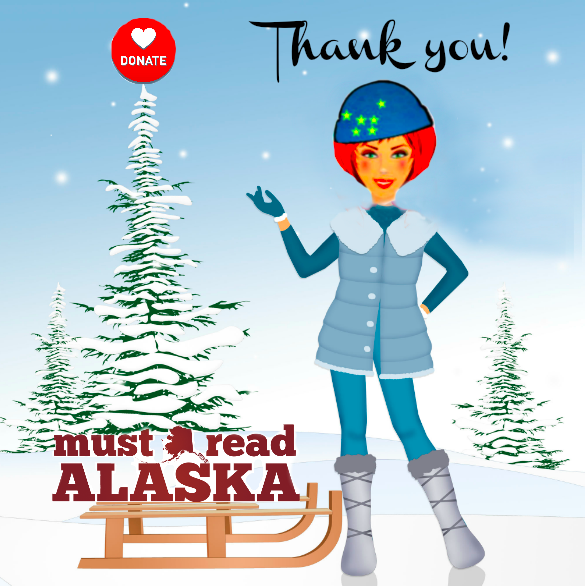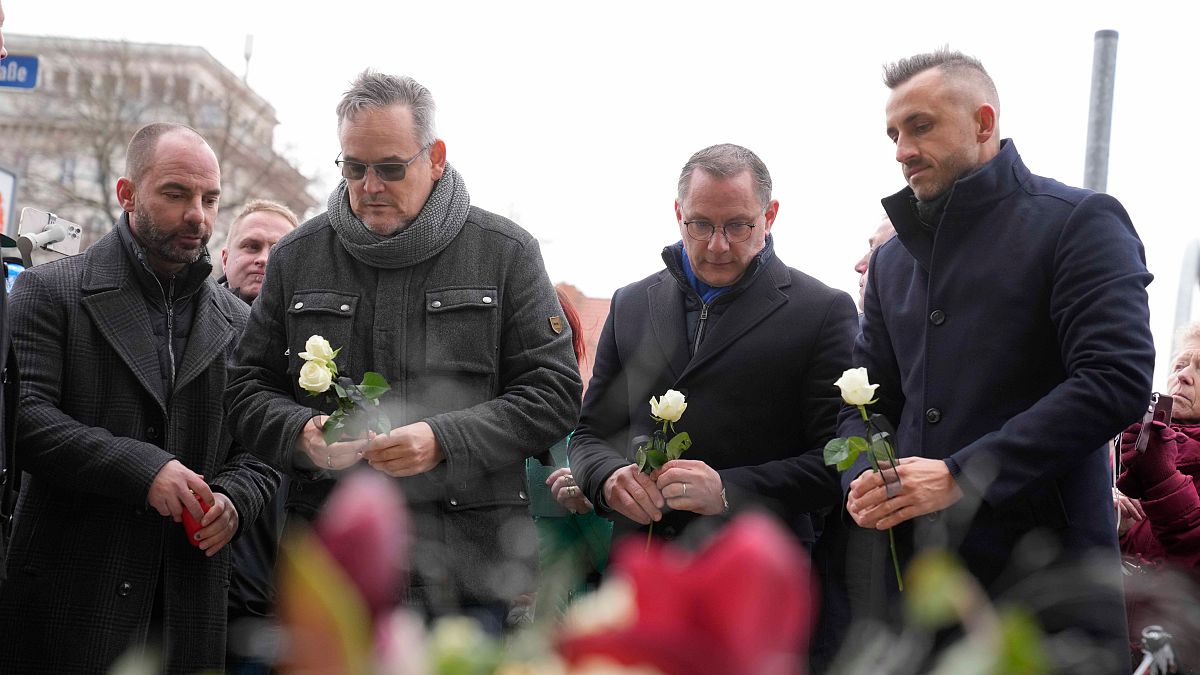Alaska
Anchorage homeless face cold and bears. A plan to offer one-way airfare out reveals a bigger crisis

ANCHORAGE, Alaska (AP) — Shawn Steik and his wife were forced from a long-term motel room onto the streets of Anchorage after their rent shot up to $800 a month. Now they live in a tent encampment by a train depot, and as an Alaska winter looms they are growing desperate and fearful of what lies ahead.
A proposal last week by Anchorage Mayor Dave Bronson to buy one-way plane tickets out of Alaska’s biggest city for its homeless residents gave Steik a much-needed glimmer of hope. He would move to the relative warmth of Seattle.
“I heard it’s probably warmer than this place,” said Steik, who is Aleut.
But the mayor’s unfunded idea also came under immediate attack as a Band-Aid solution glossing over the tremendous, and still unaddressed, crisis facing Anchorage as a swelling homeless population struggles to survive in a unique and extreme environment. Frigid temperatures stalk the homeless in the winter and bears infiltrate homeless encampments in the summer.
A record eight people died of exposure while living outside last winter and this year promises to be worse after the city closed an arena that housed 500 people during the winter months. Bickering between the city’s liberal assembly and its conservative mayor about how to address the crisis, and a lack of state funding, have further stymied efforts to find a solution.
With winter fast approaching in Alaska, it’s “past time for state and local leaders to address the underlying causes of homelessness — airplane tickets are a distraction, not a solution,” the American Civil Liberties Union of Alaska said in a statement to The Associated Press.
About 43% of Anchorage’s more than 3,000 unsheltered residents are Alaska Natives, and Bronson’s proposal also drew harsh criticism from those who called it culturally insensitive.
“The reality is there is no place to send these people because this is their land. Any policy that we make has to pay credence to that simple fact. This is Dena’ina land, this is Native land,” said Christopher Constant, chair of the Anchorage Assembly. “And so we cannot be supporting policies that would take people and displace them from their home, even if their home is not what you or I would call home.”
Bronson’s airfare proposal caps a turbulent few years as Anchorage, like many cities in the U.S. West, struggles to deal with a burgeoning homeless population.
In May, the city shut down the 500-bed homeless shelter in the city’s arena so it could once more be used for concerts and hockey games after neighbors complained about open drug use, trespassing, violence and litter. A plan to build a large shelter and navigation center fell through when Bronson approved a contract without approval from the Anchorage Assembly.
That leaves a gaping hole in the city’s ability to house the thousands of homeless people who have to contend with temperatures well below zero for days at a time and unrelenting winds blasting off Cook Inlet. At the end of June, Anchorage was estimated to have a little more than 3,150 homeless people, according to the Anchorage Coalition to End Homelessness. Last week, there were only 614 beds at shelters citywide, with no vacancies.
New tent cities have sprung up across Anchorage this summer: on a slope facing the city’s historic railroad depot, on a busy road near the Joint Base Elmendorf Richardson and near soup kitchens and shelters downtown.
Assembly members are slated to consider a winter stop-gap option in August falling far short of the need: a large, warmed, tent-like structure for 150 people.
Summer brings its own challenges: hungry bears last year roamed a city-owned campground where homeless people were resettled after the arena closed. Wildlife officials killed four bears after they broke into tents.
Bronson said he prefers to spend a few hundred dollars per person for a plane ticket rather than spending about $100 daily to shelter and feed them. He said he doesn’t care where they want to go; his job is to “make sure they don’t die on Anchorage streets.”
It’s not clear if his proposal will move forward. There is not yet a plan or a funding source.
Dr. Ted Mala, an Inupiaq who in 1990 became the first Alaska Native to serve as the state’s health commissioner, said Anchorage should be working with social workers and law enforcement to discover people’s individual reasons for homelessness and connect them with resources.
Buying the unsheltered a ticket to another city is a political game that’s been around for years. A number of U.S. cities struggling with homelessness, including San Francisco, Seattle and Portland, Oregon, have also offered bus or plane tickets to homeless residents.
“People are not pawns, they’re human beings,” Mala said.
The mayor’s proposal, while focused on warmer cities, also would fund tickets to other Alaska locations for those who want them.
Clarita Clark became homeless after her medical team wanted her to move from Point Hope to Anchorage for cancer treatment because Anchorage is warmer. The medical facility wouldn’t allow her husband to stay with her, so they pitched a tent in a sprawling camp to stay together.
Having recently found the body of a dead teenager who overdosed in a portable toilet, Clark yearns to return to the Chukchi Sea coastal village of Point Hope, where her three grandchildren live.
“I got a family that loves me,” she said, adding she would use the ticket and seek treatment closer to home.
Danny Parish also is leaving Alaska, but for another reason: He’s fed up.
Parish is selling his home of 29 years because it sits directly across the street from Sullivan Arena. Bad acts by some homeless people — including harassment, throwing vodka bottles in his yard, poisoning his dog and using his driveway as a toilet — made his life “a holy hell,” he said.
Parish is convinced the arena will be used again this winter since there isn’t another plan.
He, too, hopes to move to the contiguous U.S. — Oregon, for starters — but not before asking Anchorage leaders for his own plane ticket out.
“If they’re going to give them to everybody else,” Parish said, “then they need to give me one.”

Alaska
Nature: Northern Lights above Alaska

Watch CBS News
Be the first to know
Get browser notifications for breaking news, live events, and exclusive reporting.
Alaska
Riding the rails with Santa on the Alaska Railroad Holiday Train
ANCHORAGE, Alaska (KTUU) – It’s not the Polar Express, exactly, but families rode a train with Santa and his elves for a festive family event.
The Holiday Train is one of several event-oriented train rides hosted by Alaska Railroads. The train made three holiday runs in the month of December, this Saturday was it’s last. Tickets to ride were completely sold out for both the afternoon and evening ride.
Passengers sang carols and shared snacks on the two and a half hour ride, but one special passenger aboard the train was a real Christmas celebrity. Santa Claus accompanied riders on their trip as they enjoyed entertainment by a magician, and left the train with holiday-themed balloon animals.
The train pulled into the Anchorage depot after it’s tour, each end of the locomotive decorated in holiday lights.
The Johnsons, a family of four who just disembarked from the train, said 2024 was their second year on the holiday train. Addie, 9, said there was a lot of entertainment and she hopes to eventually come again. Her younger brother Liam said he got to meet Santa while riding, and would like a toy truck for Christmas.
See a spelling or grammar error? Report it to web@ktuu.com
Copyright 2024 KTUU. All rights reserved.
Alaska
Passed by Senate, Social Security Fairness Act sets up speed trap for Alaska Democrats' defined benefits drivers


The Senate advanced legislation that will cost hundreds of billions of dollars by eliminating what is called the Windfall Elimination Provision (WEP) and the Government Pension Offset (GPO). It’s a double-edged sword for Alaska unions and Democrats (and some Republicans) in the Alaska House and Senate.
Many public-sector workers’ Social Security payments are drastically reduced because of the WEP and GPO. If they get a pension or defined benefit, their Social Security payment gets a big haircut, although this financial penalty only impacts a portion of public sector retirees who meet certain requirements in terms of longevity of public service.
Sen. Lisa Murkowski has co-sponsored legislation repeatedly since she was appointed to the Senate to end the penalties that impact Alaska public workers more than any in the country. She celebrated the victory Friday, while highlighting the massive support from union leaders in Alaska:
“I have been working on the Social Security Fairness Act for as long as I’ve been representing Alaska in the United States Senate,” Murkowski said. “There is no doubt that Congress has taken too long to address this inequity, but I am grateful to the diligent bipartisan work of my colleagues to help us finally get this over the finish line. This legislation takes care of Alaskans who have dedicated years of service to our communities, serving in integral roles such as teachers, firefighters, and police officers. Hardworking public servants should not be denied the benefits that they paid for because of their career choices, and I’m relieved that this longstanding injustice has been remedied.”
Unintended consequence – defined benefits for state workers
The new law will invalidate one of the most often-repeated arguments that unions and Democrats in Alaska are making to return defined benefits to certain employees in the state. They have said that defined benefits are necessary because of the federal Windfall Elimination Provision and Government Pension Offset.
Defined benefits for state workers is expected to be front-and-center in the coming Alaska Legislature, which is controlled by Democrats and union-aligned Republicans.
In fact, many of the same people fighting for a return to state defined benefits in Alaska were quoted in Murkowski’s press release:
Joelle Hall, president of Alaska AFL-CIO: “The Alaska AFL-CIO and all of its affiliated unions are elated with the passage of the Social Security Fairness Act. The GPO/ WEP provisions have existed for far too long impacting the lives of thousands of Alaska workers and their heirs. Punishing public employees and their heirs for dedicating their lives to their community is wrong and we want to thank Senator Murkowski for her long-standing support for fixing this policy that has hurt so many families.”
Heidi Drygas, executive director of ASEA/AFSCME Local 52: “Today’s vote is incredibly welcome news to thousands of Alaska’s current and former public employees who have been unfairly punished simply for their public service. We thank Senator Murkowski for her leadership on this critically important issue for our membership. So many Alaska families will breathe easier tonight knowing they will receive the full retirement that they deserve. Thank you to the thousands of AFSCME employees and retirees for their decades of persistent advocacy on this issue.”
Sean Kuzakin, president of Public Safety Employees Association Local 803: “Alaska’s law enforcement personnel have worked too hard and put too much on the line in service of our communities to not receive their fully deserved Social Security benefits. I’m relieved that this long-standing injustice has been corrected and grateful to Senator Murkowski for her support for Alaska’s public safety employees.”
Dominic Lozano, president of Alaska Professional Fire Fighters: “Alaska’s firefighters applaud Senator Murkowski for standing up for public workers across Alaska,. For too long the federal government has been withholding portions of our social security benefits unfairly. Senator Murkowski understands the importance of this legislation and has been advocating for Alaskans since she started in the Senate. Retirees throughout Alaska know the importance of this legislation as well as future generations of Alaskans who will now receive their full social security benefit.”
Kathy Simpler, director of National Education Association-Alaska: “Passage of H.R. 82 is historic and will immediately make a positive difference in the lives of thousands of former military members, public servants and educators. We’re grateful that Senator Murkowski has been fighting alongside Alaska’s educators on this issue for her entire career in the US Senate.”
Paul McIntosh, president, National Active and Retired Employees Association:“More than 17,000 former public servants in Alaska, and over 2.8 million nationally, are unfairly penalized by WEP and GPO. With this Senate vote, backed by Senator Murkowski, we will finally receive the full benefits we earned through our hard work. The National Active and Retired Federal Employees Association (NARFE) will be forever grateful for Senator Murkowski’s leadership in the effort to repeal WEP and GPO, which NARFE has been advocating for 40 years.”
None of the Alaska union leaders mentioned that they will now drop their push for the costly defined benefits for State of Alaska employees, pensions that would impact city, borough, and school district employees across Alaska.
The State of Alaska still owes at least $6 billion to the former defined-benefit recipients who were enrolled in the program before it was discontinued in 2006 and replaced with a defined-contribution system, similar to what is found in the private sector.
More details
The WEP was enacted in 1983. It trims or drastically cuts Social Security benefits of workers who receive pensions from a federal, state, or local government for employment not covered by Social Security.
Alaska, a state that has a massive government workforce, has thousands of retirees impacted by the provision.
Likewise, the GPO, which was enacted in 1977, reduces Social Security benefits for spouses, widows, and widowers whose spouses receive pensions from a federal, state, or local government.
Together, these provisions reduce Social Security benefits for nearly 3 million American workers and retirees, Murkowski’s office said.
The bill had the support of all Democrats in the Senate, and 24 Republicans, including Murkowski, Sen. Dan Sullivan, and Vice President-elect Sen. JD Vance.
The bill now heads to the desk of President Joe Biden, who is expected to sign it. It will cost nearly $200 million over a decade and will increase the risk of Social Security being insolvent by the mid 2030s.

-

 Politics1 week ago
Politics1 week agoCanadian premier threatens to cut off energy imports to US if Trump imposes tariff on country
-
/cdn.vox-cdn.com/uploads/chorus_asset/file/25789444/1258459915.jpg)
/cdn.vox-cdn.com/uploads/chorus_asset/file/25789444/1258459915.jpg) Technology1 week ago
Technology1 week agoOpenAI cofounder Ilya Sutskever says the way AI is built is about to change
-

 Politics1 week ago
Politics1 week agoU.S. Supreme Court will decide if oil industry may sue to block California's zero-emissions goal
-
/cdn.vox-cdn.com/uploads/chorus_asset/file/25546252/STK169_Mark_Zuckerburg_CVIRGINIA_D.jpg)
/cdn.vox-cdn.com/uploads/chorus_asset/file/25546252/STK169_Mark_Zuckerburg_CVIRGINIA_D.jpg) Technology1 week ago
Technology1 week agoMeta asks the US government to block OpenAI’s switch to a for-profit
-

 Business7 days ago
Business7 days agoFreddie Freeman's World Series walk-off grand slam baseball sells at auction for $1.56 million
-
/cdn.vox-cdn.com/uploads/chorus_asset/file/23951353/STK043_VRG_Illo_N_Barclay_3_Meta.jpg)
/cdn.vox-cdn.com/uploads/chorus_asset/file/23951353/STK043_VRG_Illo_N_Barclay_3_Meta.jpg) Technology7 days ago
Technology7 days agoMeta’s Instagram boss: who posted something matters more in the AI age
-
News1 week ago
East’s wintry mix could make travel dicey. And yes, that was a tornado in Calif.
-
/cdn.vox-cdn.com/uploads/chorus_asset/file/24924653/236780_Google_AntiTrust_Trial_Custom_Art_CVirginia__0003_1.png)
/cdn.vox-cdn.com/uploads/chorus_asset/file/24924653/236780_Google_AntiTrust_Trial_Custom_Art_CVirginia__0003_1.png) Technology1 day ago
Technology1 day agoGoogle’s counteroffer to the government trying to break it up is unbundling Android apps

















